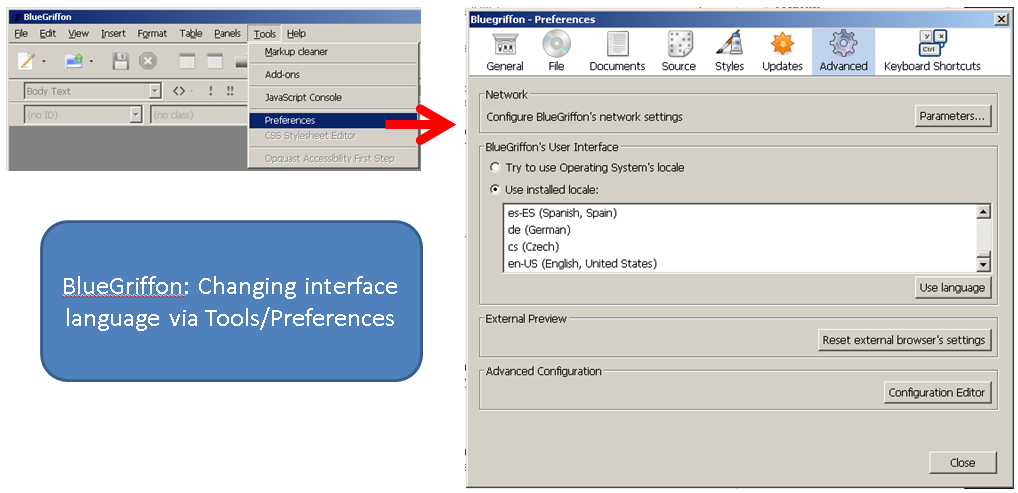

In order to change this, we will need to select all three lines ( Fig. You will notice that there is a certain degree of separation between the three lines of text. 2-13), and enter some rudimentary information about the website.Īlthough you can provide whatever information you would like in the footer, in our example we will enter the instructor's name, office hours, and location. For the purposes of this tutorial, we will only enter a brief introduction to the site, in order to provide an example.Īfter that, we will highlight the footer ( Fig. 2-12) and replacing it with the site's content. Next, we will replace the body text (the faux Latin that BlueGriffon has inserted), by first selecting it ( Fig. Select the filler text, and type in the name of your site (in this case "Professor Vandalay's Personal Site," see Fig. The first thing to be replaced will be the page header.

It is important to remember that the substance of any web page is its content, and so any extensive formatting of the page (such as background, colors, fonts, etc.) should come afterwards. Now that we have created the Home Page, we can begin editing, replacing the faux Latin with meaningful text. 2-10) shows what the template of the home page should look like with the filler text inserted. When you have finished typing, click Save. It is a good practice to name the main page of every site in this way, in order to make it easier to find it when using a web browser. In the File name box, we will call the page index ( Fig. Navigate to the main directory which was created in the last section on Creating the Site Directory. To save, click on the Save icon in the toolbar ( Fig. Now the first page has been created, with a page header, navigation pane, body text, and footer. This will automatically insert filler text into your page, so you can more easily see where particular parts of the page begin and end. 2-6).Īfter adding the column to the page layout, click the check box beside Include 'lorem ipsum' dummy content ( Fig. In the page layout section of the wizard, click on New row, and select 1 column, 100% ( Fig. For our purposes, though, we will leave it blank. You will also have the option of setting a background image for the HTML document ( Fig.

Since you can change these at any time, it is best to leave these at their default settings initially. Then you will be prompted to enter your color and background settings ( Fig. All the other fields may be left blank, if so desired. Type in the title of your webpage, and if you wish, the author. Next, the wizard will ask you to enter the general document properties ( Fig. The document type we will be using will be the default HTML 5 option ( Fig. The new document wizard will then appear, prompting you to select what kind of HTML document you would like to create. Although there is an option in BlueGriffon to start with a blank page, for the purposes of this tutorial, we're going to use the new document wizard.įirst, open the BlueGriffon program, and from the File menu, select New wizard ( Fig. Now that we have created a default directory for our new site, we can create our home (or "index") page.


 0 kommentar(er)
0 kommentar(er)
